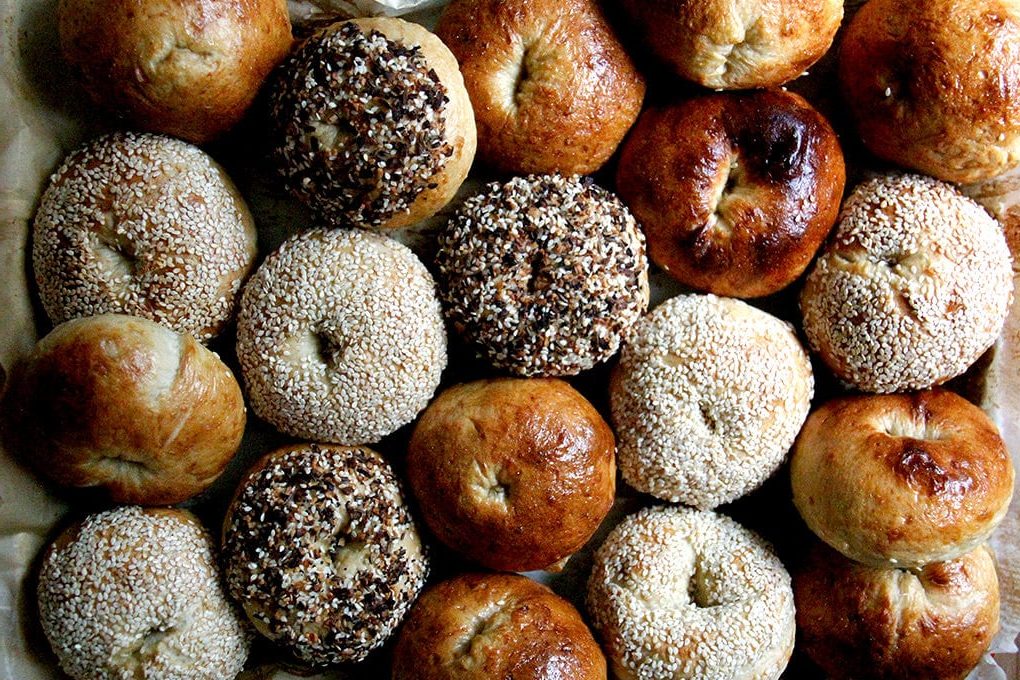Recipe
The Ultimate Guide to Baking Bagels
The Ultimate Guide to Baking Bagels
My first attempt at baking bagels was, to put it mildly, a disaster. They emerged from the oven looking more like sad, deflated bread rolls than the glorious, chewy rings I craved. Sound familiar? Many home bakers grapple with the elusive perfect bagel – that distinct chew, the glossy crust, the tender interior. It’s a craft that combines tradition with precise science, and often, the right tools make all the difference. As a master baker and food scientist, I’ve spent decades perfecting this art, and I’ve learned that truly professional results often stem from a deep understanding of the process and access to quality tools. This is where MBICO, a leading manufacturer of high-quality bakery equipment, empowers bakers to achieve their vision. By the end of this article, you will have a deep understanding of the bagel’s unique journey from dough to deliciousness, learning the exact techniques to apply in your own kitchen to achieve that iconic texture and flavor.
The Bagel’s Polish Heritage: More Than Just a Roll with a Hole
The bagel, with its distinctive ring shape and wonderfully chewy texture, boasts a rich history dating back to 17th-century Poland. It wasn’t just another bread; it was a staple, evolving from a simple leavened dough into the iconic product we know today. The secret to its unique character lies in its preparation: not just baked, but first boiled then baked. This two-stage process is fundamental to creating the bagel’s signature characteristics. In my years of running a professional bakery, I’ve found that understanding this heritage deeply influences how we approach the bake. The initial boil causes the starches on the surface of the dough to gelatinize, setting the crust before it even enters the oven. This crucial step is what prevents the bagel from puffing up too much during baking and contributes to its dense, chewy crumb and shiny, crackly crust.
Why the Boil is King: Science Behind the Chew
- Starch Gelatinization: The hot water bath causes the starch molecules on the surface to absorb water and swell, forming a gel. This creates a barrier that locks in moisture during baking.
- Crust Development: This gelatinized layer then browns intensely in the oven, thanks to the Maillard reaction, giving the bagel its characteristic dark, glossy finish and that desirable crunch.
- Reduced Oven Spring: By precooking the exterior, the bagel has less “oven spring” – it doesn’t expand as much as a regular bread roll, contributing to its dense, chewy interior.
The Science of the Perfect Bagel Dough: Wheat, Water, and Wonderful Gluten
At the heart of every great bagel is a meticulously crafted dough. Unlike many other breads, bagels demand a high-protein, high-gluten flour. This is non-negotiable for achieving that signature chew. In my lab, we’ve analyzed countless flour types, and time and again, strong bread flour (or even vital wheat gluten added to all-purpose) proves essential. The gluten network, developed through vigorous kneading, traps the gases produced by yeast fermentation, giving the bagel its internal structure.
Crafting Your Dough: Ingredients and Technique
- High-Gluten Flour: A minimum of 12-14% protein content is ideal. This forms a robust gluten network crucial for chewiness.
- Hydration: Bagel dough is typically lower in hydration than many artisan breads. This firm dough contributes to its dense crumb.
- Kneading: Expect to knead for longer than usual – 10-15 minutes by hand or machine. The goal is a smooth, elastic, and strong dough that passes the “windowpane test.” Investing in quality bakery equipment, from mixers to proofers, can truly elevate your craft, ensuring consistent dough development.
- Yeast Fermentation: While some bakers swear by a long, cold ferment (24-48 hours in the refrigerator) for deeper flavor development, others achieve great results with a shorter, warmer proof. Here’s the science behind both: a long cold ferment allows enzymes more time to break down starches into complex sugars, enhancing flavor, while a shorter, warmer proof is faster but might yield a less complex taste. Choose based on your schedule and desired flavor profile.
Shaping and Proofing: Crafting the Iconic Ring
Shaping is where the bagel truly takes its form. There are two primary methods: rolling out a rope and joining the ends, or punching a hole in a ball of dough. I prefer the latter as it creates a more consistent, seamless ring, reducing the chance of weak points. After shaping, a brief proofing period allows the yeast to produce a bit more gas, giving the bagels a slight lift. Over-proofing is a common mistake; a bagel that feels light and airy will lose its chew. We’re aiming for a slightly puffy, yet still firm, feel.
Shaping Techniques for Consistency:
- Roll and Punch: Form dough into small, tight balls. Gently press your thumb through the center to create a hole, then carefully stretch the ring to achieve the desired size.
- Rope Method: Roll a piece of dough into a 8-10 inch rope, tapering the ends. Wrap around your hand and press the tapered ends together firmly to seal.
The Crucial Boil: The Secret to that Signature Chewy Crust
This is the moment of truth that transforms a mere dough ring into a bagel. The boiling water bath, often infused with malt syrup or baking soda, is what gives bagels their characteristic sheen, chew, and distinct flavor. Malt syrup adds a touch of sweetness and promotes a deeper, richer crust color through enhanced Maillard reactions. Baking soda, being alkaline, also helps in browning and can contribute to a slightly more pretzel-like crust.
Boiling Best Practices:
- Water Additives: Add a tablespoon of malt syrup (or barley malt extract) per liter of water for traditional flavor and color. A teaspoon of baking soda can be used for a slightly more alkaline crust.
- Boil Time: Typically 30-60 seconds per side. Shorter boils yield a softer bagel, longer boils a chewier, denser one. Don’t overcrowd the pot; boil only a few at a time to maintain water temperature.
- Drain Well: Use a slotted spoon or spider to remove bagels and allow excess water to drain completely before topping.
Baking for Perfection: Achieving Golden Brown and Glorious Texture
After their dip in the hot bath, the bagels are ready for their final transformation in the oven. High heat is essential here, typically between 400-450°F (200-230°C). This intense heat ensures a rapid rise (what little oven spring remains) and quick browning of that pre-gelatinized surface. A professional bakery oven is designed to maintain consistent temperatures and often provides steam injection, which further contributes to a shiny, crisp crust. For home bakers, a preheated baking steel or stone can mimic some of this intensity.
Baking Essentials:
- Preheat Thoroughly: Ensure your oven, baking stone, or sheet is fully preheated to achieve an initial burst of heat.
- Optional Toppings: Apply seeds (sesame, poppy, everything bagel seasoning) immediately after boiling, while the surface is still tacky.
- Baking Time: Typically 15-25 minutes, or until deep golden brown and firm to the touch. Rotate trays halfway through for even baking.
Beyond the Classic: Variations and Creative Toppings
While the classic plain or sesame bagel is a masterpiece, the world of bagels is vast and inviting for experimentation. Once you’ve mastered the fundamentals, you can explore various flavor infusions and toppings. From cinnamon raisin to garlic and onion, the possibilities are endless.
Ideas for Bagel Innovation:
- Dough Inclusions: Mix dried fruits, cheeses, or herbs directly into the dough during the kneading phase.
- Topping Combos: Beyond the “everything” seasoning, consider sun-dried tomato and basil, or even a sweet streusel topping.
- Different Flours: Experiment with a percentage of whole wheat or rye flour for different flavors and textures, though remember to adjust hydration accordingly. Your adventurous spirit might even lead you to explore how other baking tools, even repurposing other kitchen workhorses like pizza and food ovens for a quick bake, can adapt to your culinary whims.
Conclusion
Baking the perfect bagel is a rewarding journey that combines historical tradition with precise scientific understanding. From the high-gluten flour that builds the chewy structure to the critical boiling step that sets the crust, each stage is vital. Mastering these techniques – diligent kneading, careful proofing, the definitive boil, and a hot, consistent bake – will transform your home baking. This weekend, try adjusting your dough’s hydration by 2% and observe the difference in the crumb. Or experiment with a longer cold ferment to unlock deeper flavors. Embrace the science, trust the process, and soon you’ll be pulling magnificent, chewy bagels from your oven, just like a pro.







Explore MBICO's categories
Bakery equipment
13 Products
bulk and semi-bulk bread baking ovens
3 Products
Bulk Breads Baking equipment
14 Products
Confectionery equipment
7 Products
Mini ovens
3 Products
Pizza and food ovens
4 Products
Baking equipment
25 Products
Bakery oven
5 Products
Tafton baking ovens
3 Products
Barbari baking ovens
4 Products
Sangak bakery ovens
3 Products
Lavash baking ovens
3 Products
Pastry and confectionery ovens
3 Products
Baking ovens
10 Products
Mobile baking machines
4 Products
Explore MBICO's products
Dough Moulder Machine
Fermentation Chamber
Mobile Bakery Container
Portable Rotary Semi – Automatic Oven for Baking Traditional Breads
Automatic Production Line for Baking Sangak Bread
Mobile Kitchen Container
Dough Proofing Machine
Tunnel Baking Oven